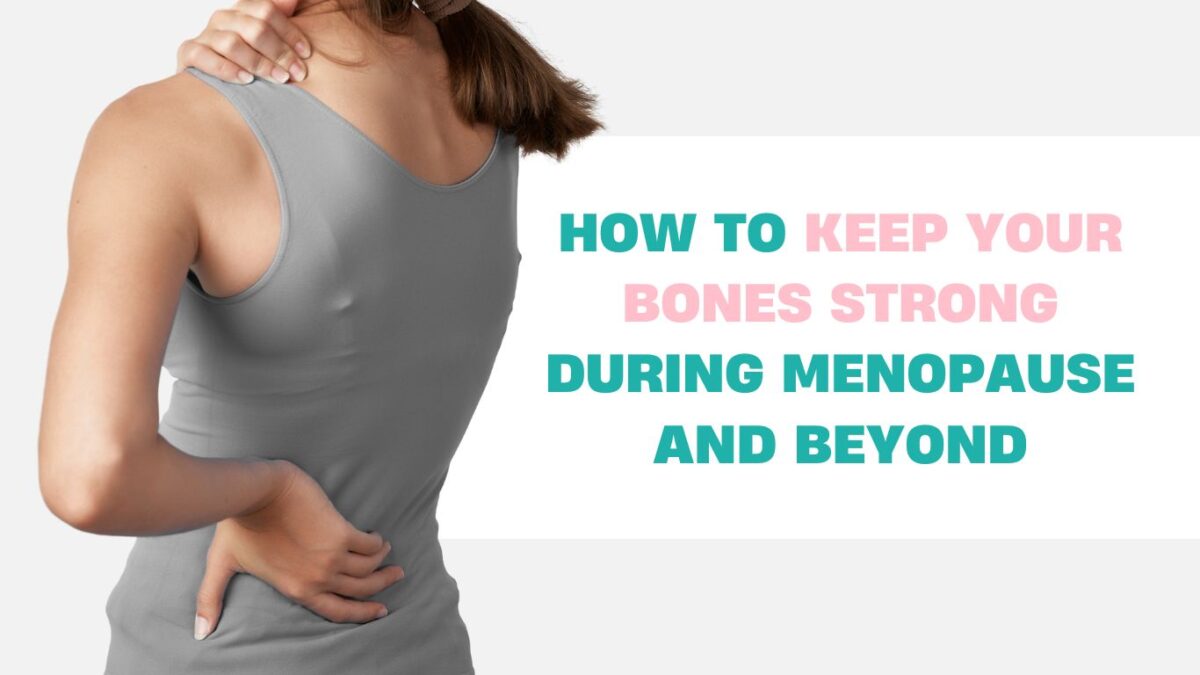How to Keep Your Bones Strong During Menopause and beyond

Maintaining strong and healthy bones is crucial, especially for those who are facing the perimenopause and menopause phase. It’s a journey filled with ups and downs, and one of the challenges is keeping your bones in good shape. In this article, we’ll discuss why bone health matters and practical strategies to keep your bones strong.
The Basics of Bone Health
Bones are not just static structures – they’re living tissues that play a vital role in your overall well-being. They provide support, protect your organs, and help you move. Interestingly, they’re not stagnant; your body constantly renews them. During your growing years, new bone forms faster than old bone breaks down. But as you age, this balance shifts, and bone loss can become a concern, especially for women.
Postmenopausal Challenges
After menopause, hormones take a different path, and estrogen levels drop significantly. Estrogen is a hormone that keeps your bones dense and strong. As estrogen levels dip, bone loss becomes a real concern. You might hear terms like “osteopenia” (lower-than-normal bone density) and “osteoporosis” (extremely low bone density, making bones fragile and prone to fractures).
Monitoring Bone Health
Keeping an eye on your bone health is crucial. You have several tools at your disposal, such as physical exams, blood and urine tests to measure calcium levels, and bone density tests.
- Regular Physical Exams: Regular physical examinations by your healthcare provider are a fundamental component of monitoring bone health. During these check-ups, your doctor will assess your overall health and may pay particular attention to any signs or symptoms that could indicate bone issues.
- Blood and Urine Tests: Blood and urine tests are valuable tools for measuring calcium levels in your body. These tests can provide important insights into your bone health and help identify any potential concerns.
- Bone Density Tests: One of the most common and comprehensive methods for assessing bone health is the dual-energy X-ray absorptiometry (DEXA) scan. This scan is quick, painless, and offers a thorough evaluation of bone mineral density. It provides detailed information about specific areas of your body that are more susceptible to fractures, including the hip, spine, and wrist.
- Fracture Risk Assessment Tool (FRAX): The Fracture Risk Assessment Tool, or FRAX, is a valuable online resource developed by the World Health Organization. It is designed to estimate your 10-year risk of experiencing fractures as a result of osteoporosis. By using FRAX, you can gain valuable insights into your bone health and identify potential risks.
Prevention and Treatment Strategies
Preventing bone loss is your best bet, whether you’ve already experienced it or not. Here are some key strategies to keep your bones in top shape:
1. Calcium
- Aim for 1,200 mg of calcium daily, from both your diet and supplements.
- Good sources include low-fat dairy (milk, cheese, yogurt), leafy greens, almonds, beans, and calcium-fortified foods (check labels).
2. Vitamin D
- Get 800-1,000 IU/day of vitamin D, from supplements or natural sources.
- Most multivitamins have 400 IU, so you might need an extra supplement.
3. Quit Smoking
- Quitting smoking is crucial for bone health, as smoking is linked to reduced bone density.
4. Exercise
- Engage in weight-bearing exercises like walking, dancing, and weightlifting; they strengthen your bones.
5. Maintain a Healthy Weight
- Keeping a healthy body weight is essential; excessive weight can strain your bones and lead to bone loss.
6. Limit Alcohol
- Limit alcohol intake, as excessive drinking can harm your bone health.
Maintaining bone health is a vital part of your overall well-being, especially after facing breast cancer. Treatments may pose challenges to your bones, but with proactive measures, you can make a real difference. Understanding the significance of bone health, keeping an eye on it, and adopting prevention and treatment strategies can help you reduce the risk of fractures and maintain your quality of life. Remember, knowledge and action are your allies in keeping your bones strong.
